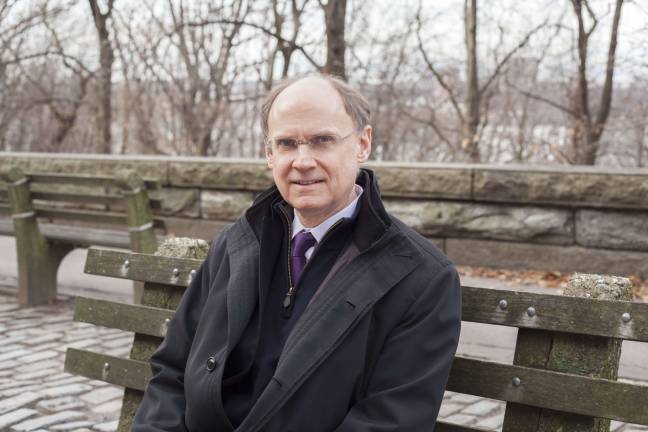John Herrold, Riverside Park Conservancy From Dog Lover to Park Runner Parks

Riverside Park has a true friend in John Herrold. Since 2006, he has been Riverside Park’s administrator, while adding the duel title of president of the Riverside Park Conservancy, in 2009.
Following work in business and freelance photography, Herrold’s 20-year parks career began humbly enough in the mid-1990s as a seasonal gardener employed by the Conservancy. One afternoon, he came across a stray dog, which he later adopted. As a result, he became involved in the dog community.
“The dog runs were not terribly nice and off-leash hours weren’t fully accepted by the community,” Herrold said. “I had a unique vantage point that helped in rallying support for better dog runs and greater collaboration with the Parks Department.”
Herrold’s full time work for the NYC Parks Department began in 1999, but his love and appreciation for parklands began at an early age. “It’s been in my blood since I was around eight years old,” he said. “We would leave our New Jersey home and spend summers caring for a place on a tract of Pennsylvania woodland.” In addition, as a high school junior, he helped found a group that persuaded his New Jersey town to preserve as parkland an old family farm that had been left to the town, rather than sell it to developers.
In 2001, he began a four-year term as manager of Madison Square Park, which was followed by a two-year stint as administrator of Van Cortlandt Park in the Bronx.
Herrold found his way back to Riverside Park in 2006. “I am a West Sider and have been using Riverside Park since the 1970s, so this work is deeply meaningful for me,” he said. “All the more now that my twin sons, still toddlers, regularly visit the park’s playgrounds and pathways.”
Herrold explained that the Riverside Park Conservancy’s focus is on engaging the community, and getting it to care about and for the park. One of their programs includes more than 40,000 yearly hours of volunteer time, half of it from 225 local residents – “Park Tenders” – who commit to the long term care of specific landscape sites and park facilities such as playgrounds, tennis courts, and dog runs.
In addition, more than 3,500 donors in the community now contribute some $2.5 million a year, much of it in small contributions, to augment the City’s support. That money pays for gardeners, plant materials, tree care, tools, and free public programs. “The Parks Department workers and management are dedicated and hard working, but the level of resources needed to make the park what it is, takes additional funding from outside donors,” Herrold said.
In 2010, for example, the Zone Gardener Program was created, and funded, by the Conservancy. This program currently includes eight skilled horticulturists who have fulltime jobs and work with the Parks Department staff and volunteers. The goal is to add many more to the fulltime staff.
Many improvements have been made to Riverside Park during Herrold’s tenure, but he points to three he’s especially proud of; one is the reconstruction of Neufeld Playhouse, on 76th street, in 2012. “The Conservancy got the parents involved and were able to get funding from the city, with a special thank you to Gale Brewer [then Council Member, now Manhattan Borough President] and Scott Stringer [then Manhattan Borough President, now city Comptroller].”
Secondly, in 2013, there was the reconstruction of the active recreation area, such as the playgrounds and ball fields, at Ft. Washington Park, from 158th street-165th street. This, too, came about through community involvement and was a part of PlaNYC.
Lastly, Herrold points to the ongoing renovation of the 102nd St. Fieldhouse, which he hopes to be completed later this year. This project is a partnership of the Conservancy, NYC Parks Department and Parsons the New School for Design.
Currently the Conservancy is working with the Parks Department, community boards, elected officials, and park users to update the Master Plan for Riverside Park’s continuing restoration, improvement, and care—something last done in 1984. Herrold says that helping to nurture a shared vision to guide future efforts is essential to the park’s success. “I was a park user long before I worked here, and always try to approach the park’s needs through the eyes of the park user,” he said.